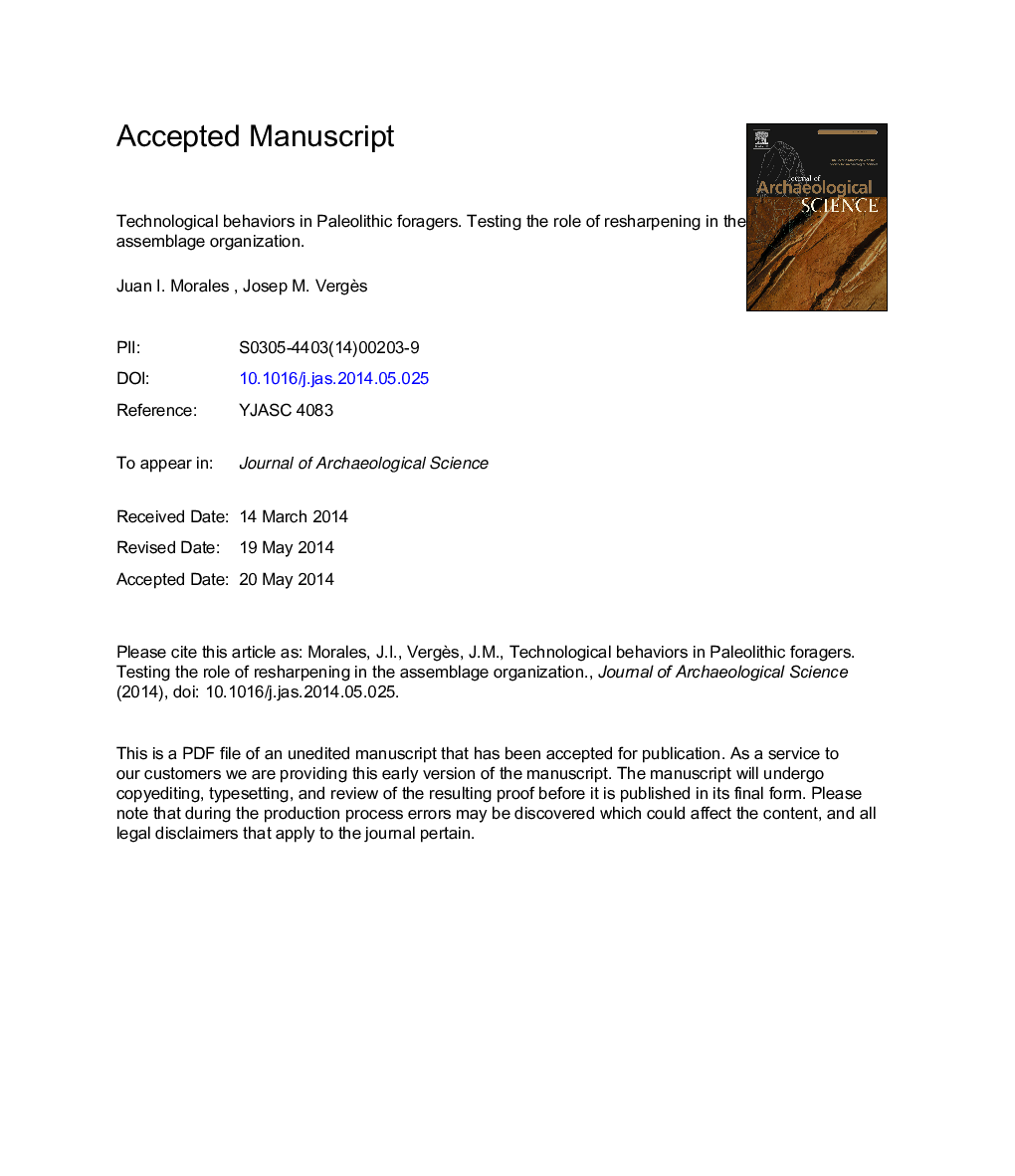| Article ID | Journal | Published Year | Pages | File Type |
|---|---|---|---|---|
| 7443030 | Journal of Archaeological Science | 2014 | 48 Pages |
Abstract
This paper describes the evaluation, based on archaeological materials, of the role that resharpening plays in the continuum of stone-tool reduction. We define a multi-evidence-based approach that combines use-wear intensity and location, traces that could be related to hafting and the distribution of mineral residue. By combining these methods, we have observed a minimum resharpening ratio of 52% in the selected end-scraper sample. If one takes into account ethnographically obtained information about end-scraper management, this result is an unexpectedly low value. Dynamics of mobility, technological organization and raw material availability causes high variability in the archaeological visibility and characteristics of lithic remains. Our results are in line with a technology organized wholly or partially on the basis of expediency, in which tools are not curated for more than the time taken to complete the activity or the length of the occupation. Tools that were not exhausted were abandoned at the site, leading to recycling behaviors in periodic site reoccupations.
Related Topics
Physical Sciences and Engineering
Materials Science
Materials Science (General)
Authors
Juan I. Morales, Josep M. Vergès,
